Iconic Aircraft of the Vietnam War
Boeing B-52 Stratofortress
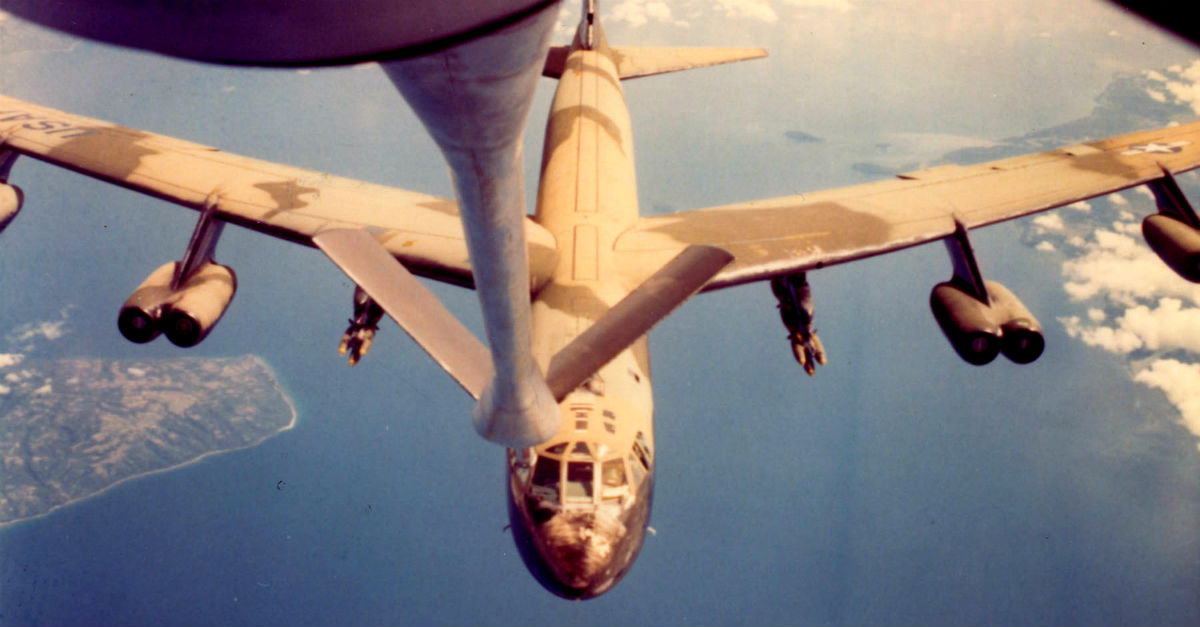
This American project was first conceived in the immediate wake of the Second World War. The US needed a long-range subsonic strategic bomber capable of delivering a huge amount of ordinance, either conventional or nuclear, to an enemy position deep within their airspace. The result was the Boeing B-52 Stratofortress, a Vietnam War aircraft so powerful and versatile that it remains in service to this day.
With a crew of five, the B-52 aircraft gets its power from eight Pratt & Whitney TF33 turbofan engines, each of which produces 17,000 lbf. The net result is a top speed of 650 miles per hour with a maximum range of nearly 9,000 miles without refueling. The armament is equally frightening, approximately 70,000 pounds of any variety of ordinance including bombs, mines, missiles, or even nuclear weapons. Add in some advanced and consistently upgraded avionics, and the result is a near-perfect platform for hitting NVA targets wherever they were found.
McDonnell Douglas F-4 Phantom II
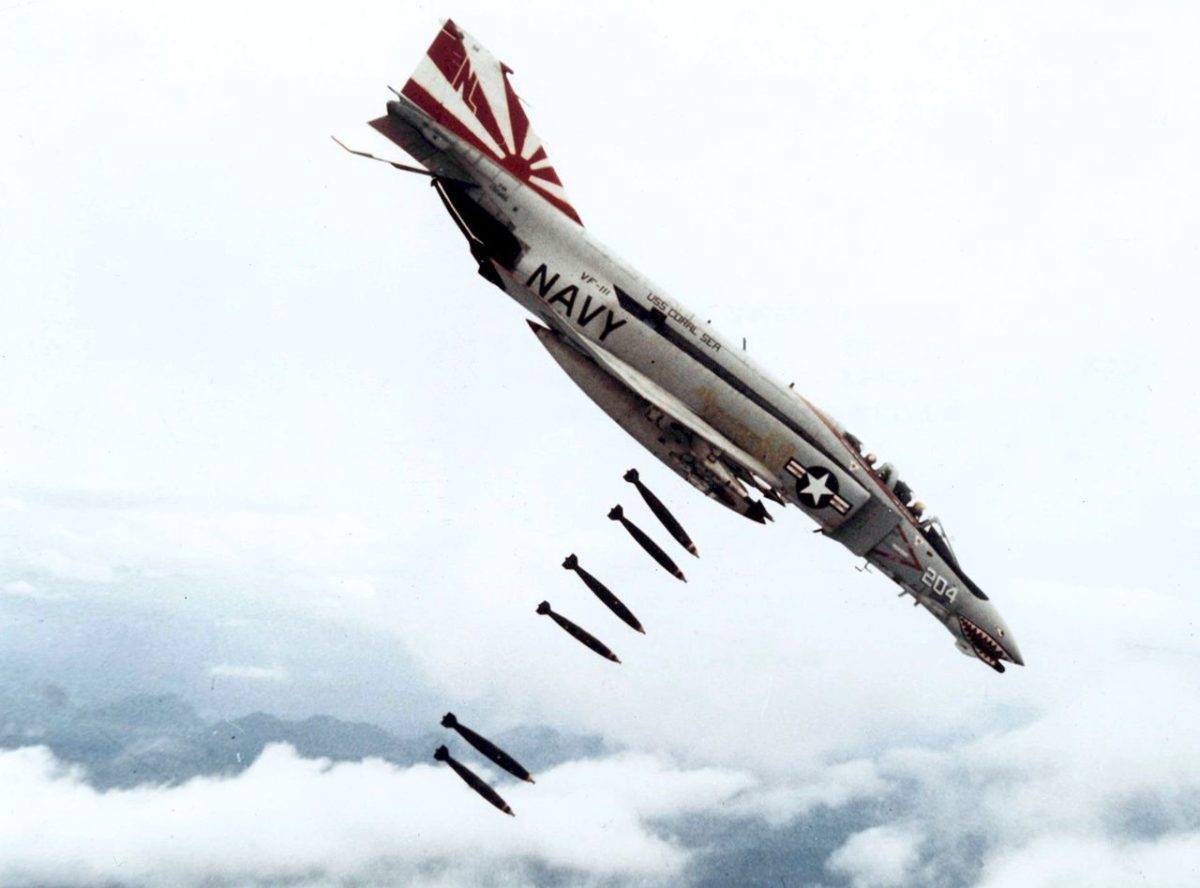
Another American aircraft, the McDonnell Douglas F-4 Phantom II is a two-seat, twin-engine, all-weather long-range supersonic jet aircraft. It functions equally as well as either an interceptor or a fighter-bomber. Originally developed for the United States Navy for carrier duty, the F-4 Phantom II saw a lot of action during the Vietnam War.
While retired from US service, a look at the numbers indicates that the F-4 Phantom II was a force to be reckoned with in the skies of Southeast Asia. Powered by two General Electric J79 axial compressor turbojets, the F-4’s top speed was a still-impressive Mach 2.23. With a combat range of 585 miles, it functioned perfectly in either an interceptor or a strike role. Many of the Vietnam-era F-4s did not carry defensive weapons like machine guns or cannons, but they made up for that with a huge payload of missiles in a variety of models or configurations. No matter what the mission, the F-4 Phantom II is still an impressive bird.
Republic F-105 Thunderchief

The Republic F-105 Thunderchief made its debut just before full US involvement in the war in Vietnam in 1958. Designed to supplant the aging F-86 Sabre fighters then still in service with US and Australian forces, the F-105 was a big step forward for its day.
The designers built the F-105 around a well-established powerplant: the Pratt & Whitney J75 afterburning turbojet engine. Capable of delivering 24,500 lbf of thrust with the afterburner engaged, the F-105’s top speed of Mach 2.08 is still competitive among current fighter aircraft. The armament was no slouch, either. A 20mm M61A1 Vulcan cannon in the nose supplemented the array of bombs and missiles that could be affixed to any of the 5 hardpoints underneath the aircraft, including the internal bomb bay. So whether equipped with missiles like the AIM-9 Sidewider or bombs for close ground support, the F-105 was a big step forward in what military aircraft could be.
Mikoyan-Gurevich MiG-21 (NATO Reporting Name: Fishbed)
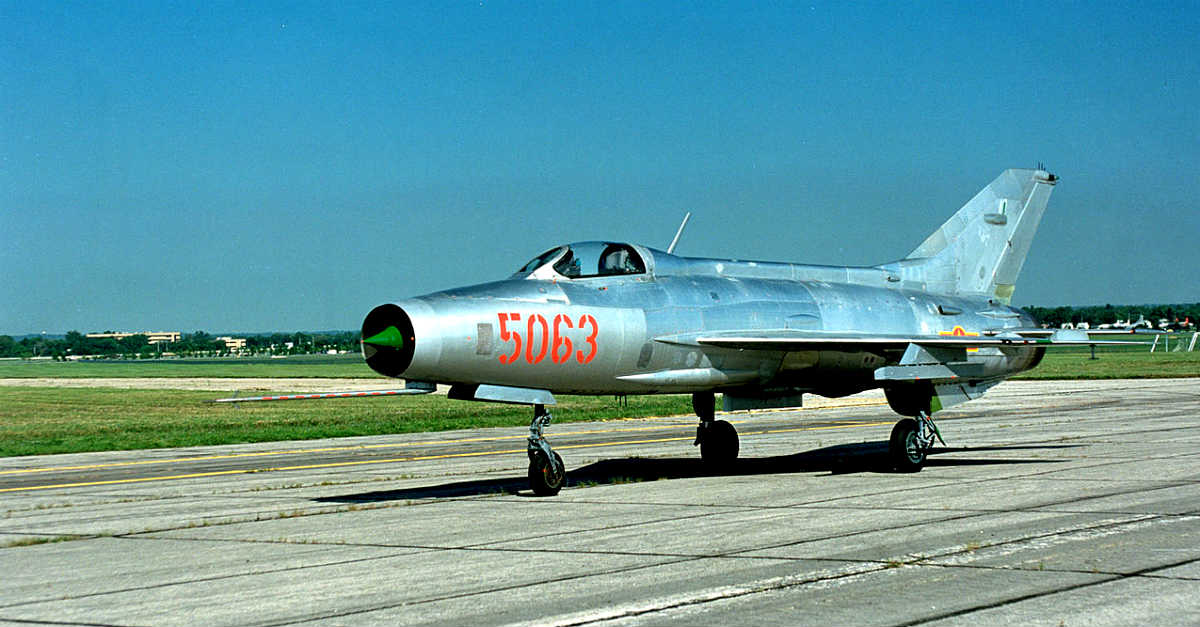
The US and its allies weren’t the only forces in Vietnam fielding a top-notch jet fighter. First introduced in 1959 and designed and produced by the Soviet Union, the MiG-21 “Fishbed” was a formidable adversary.
Nicknamed the “Balalaika” by its pilots for its odd resemblance to the musical instrument, the MiG-21 straddles the line between second and third generation jet fighters. So while specs and armament vary, in general the MiG-21s of the Vietnam War were powered by a single Tumansky R25-300 afterburner-capable engine. These delivered a top speed of Mach 2.0 and a service range of 751 miles. Armed with a 23mm GSH-23 cannon, the MiG-21 could carry either missiles or rocket pods, depending on the configuration and the desired payload range. These aircraft performed so well that the Vietnam People’s Air Force did not fully retire them until 2015—a testament to the design and its operators.
Lockheed AC-130 Spectre/Spooky/Stinger II/Ghostrider
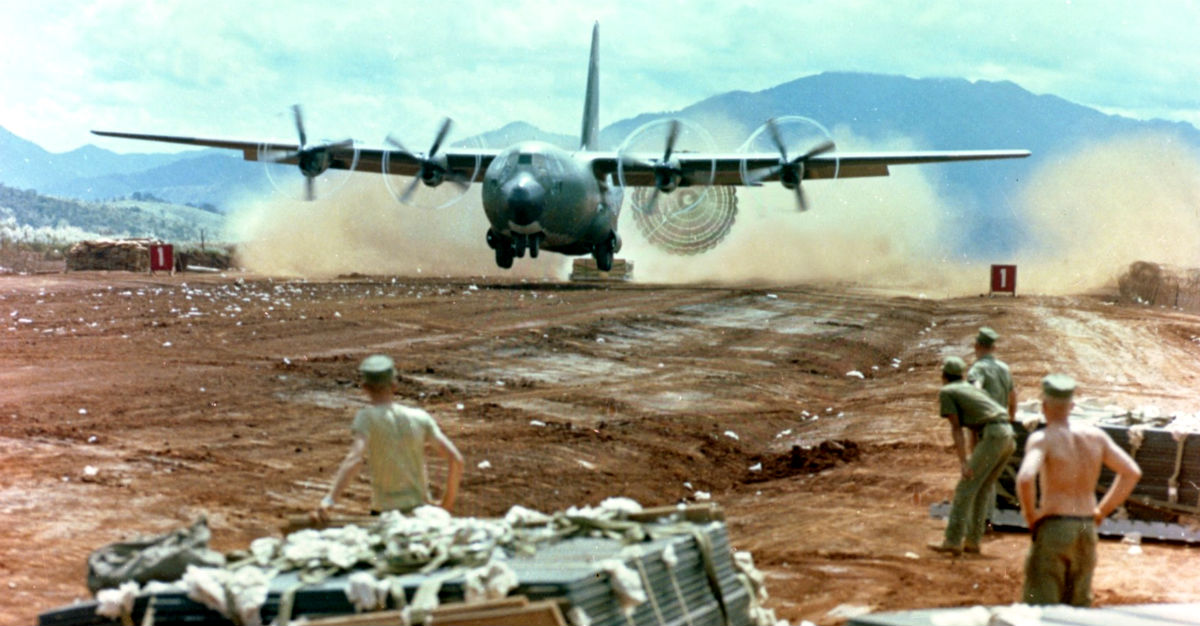
The plane of many names, the Lockheed AC-130 is a kind of military aircraft rarely spotted in the skies anymore: an armored long-range ground-attack gunship. A variant of the C-130 Hercules transport aircraft, also designed by Lockheed, the AC-130 was a fearsome sight over any battlefield. Particularly if you were an enemy combatant.
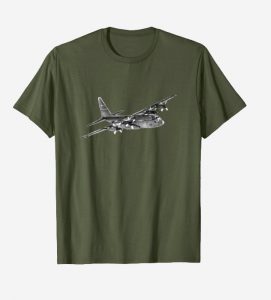
The C-130 has a huge payload—up to 45,000 pounds in some configurations—and the AC-130 took advantage of this to deliver a punishing amount of firepower to ground targets. Armament ranged from the standard machine guns and mini guns, to the M61 20mm Vulcan cannon, to full-sized artillery pieces mounted in the belly of the aircraft for use on the hapless targets below. These arms generally also allowed for a wide array of communications, radar, and command and control systems. By ensuring clear communications and the interception of enemy signals, these systems could help to turn the tide of battle.
Slated for retirement, this Vietnam War aircraft got a new lease on life when its unique capabilities proved perfect for the recent conflicts in Iraq and Afghanistan. It seems that these mighty war birds may keep flying for some time yet.
McDonnell F-101 Voodoo
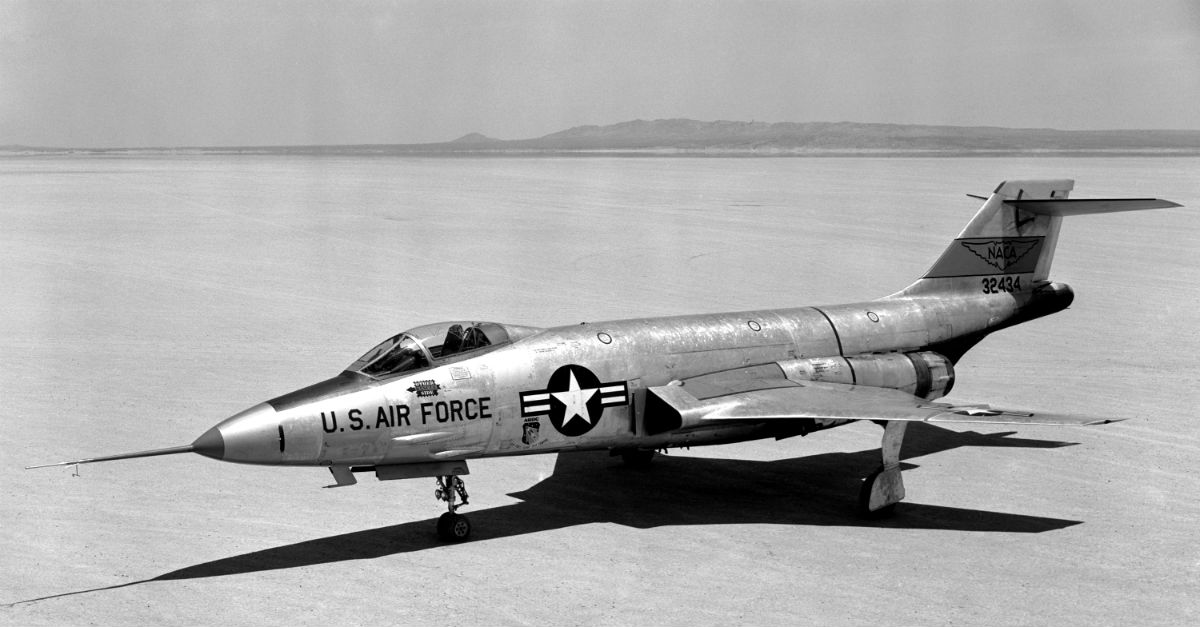
The McDonnell has a long, strange history that lead to its role in the Vietnam war, which is part of its unique charm. Furthermore, these events contributed directly to its performance in that conflict.
Originally conceived in the 1950s as a jet-powered long-range bomber escort or penetration fighter, the F-101 was designed with speed and endurance in mind. For quite some time this bird held a number of records for fastest jet powered aircraft. Its later development, through the end of the 1950s, took a darker turn. McDonnell began to imagine the F-101 as a nuclear armed fighter bomber delivering tactical nuclear strikes to enemy targets.
Thankfully that never came to pass, and the F-101 Voodoo instead found a niche in Vietnam as a reconnaissance aicraft, taking photos of enemy positions and then quickly screaming out of harm’s way. The F-101 performed beautifully in that role, continuing to serve in the USAF until 1979.
Lockheed P-3 Orion
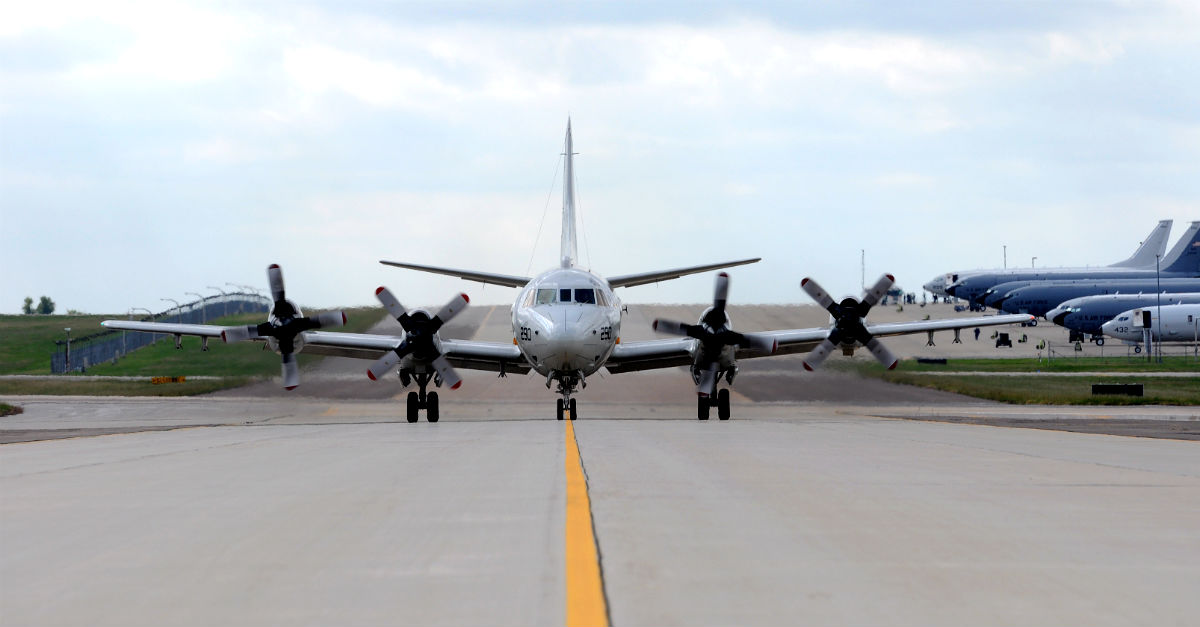
The Vietnam War is typically remembered as a ground conflict with an aerial component—rarely is much thought given to the naval operations around the war. But they happened, they were important, and the Lockheed P-3 Orion played a significant role in them.
A four-engine turboprop surveillance aircraft designed for anti-submarine and maritime surveillance missions, the P-3 Orion is based on the L-188 Electra commercial airliner. It succeeded wildly in that role—such that it remains in service with the US Navy to this day.
In Vietnam, the P-3 Orion saw extensive action during Operation Market Time, the effort to cut off resupply by sea to the Viet Cong and other enemy forces. While the P-3 Orion spent most of its time flying missions from bases in the Philippines and Vietnam over the coastal waters of the latter nation, it did occasionally participate in “feet-dry” missions over land. With only one combat loss during this delicate operation, the P-3 Orion is one of the under-sung heroes of the Vietnam war.
Lockheed U-2
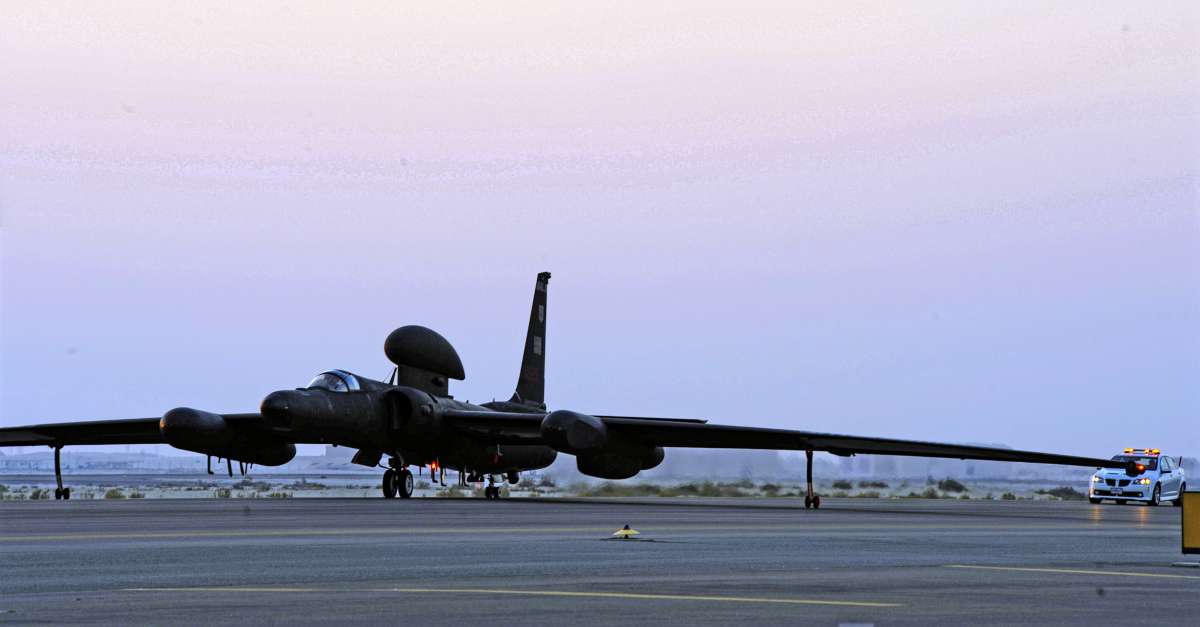
The Lockheed U-2 was at the forefront of some of the most intense moments of the Cold War, so much so that it remains locked in popular memory. A single-engine jet aircraft designed for ultra-high-altitude reconnaissance missions, the Lockheed U-2’s intelligence gathering capabilities were an essential part of US military and clandestine efforts throughout the Cold War era.

Designed by the legendary Clarence “Kelly” Johnson of Lockheed’s perhaps-infamous Skunk Works, the U-2 was capable of some impressive feats. The General Electric F118 turbofan delivered a modest top speed of Mach 0.67, but service ceiling of well over 70,000 feet. This meant that the U-2 was able to fly well above most missile or even radar systems of its day, making it nearly untouchable, such that only a very few were lost to enemy action. While it carried no arms, the U-2’s real weapons were its sensors and cameras. These were some of the most advanced ever produced given the technology at the time. The U-2 has been continually updated and continues to fly in missions to this day.
Lockheed SR-71 Blackbird
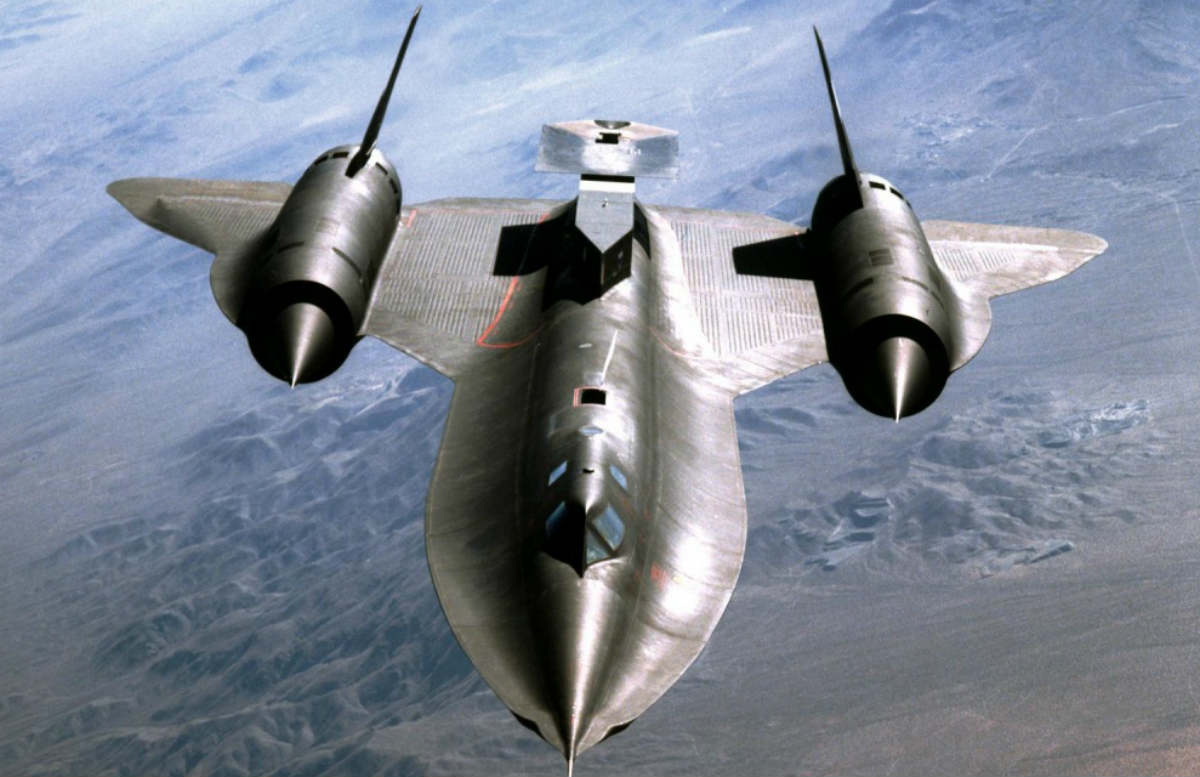
This is perhaps the most advanced aircraft developed in the 1960s and certainly one of the highest performing military aircraft of all time. Most people associate Lockheed’s SR-71 Blackbird with the 1980s, however its operational history begins with the Vietnam war.
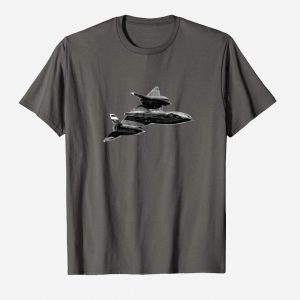
The concept behind the SR-71 was simple, yet exceptionally brave and ambitious: build a long-range strategic reconnaissance aircraft capable of speeds in excess of Mach 3.0, with a reduced radar cross-section to help it evade detection by the enemy. Designed by Clarence “Kelly” Johnson of Lockheed’s Skunk Works Division, the SR-71 if anything exceeded expectations.
Designed to operate with a crew of two, the SR-71 is powered by twin Pratt & Whitney J58-1 continuous-bleed afterburning turbojet engines. Though numbers remain classified, the SR-71 has a speed of at least Mach 3.3. The range is an estimated 2,900 nautical miles, with a service ceiling of well over 85,000 feet.
The SR-71 retired from United States Air Force service in 1998, and remained in service with NASA for another year. Thirty-two aircraft were built in total.
Vought F-8 Crusader
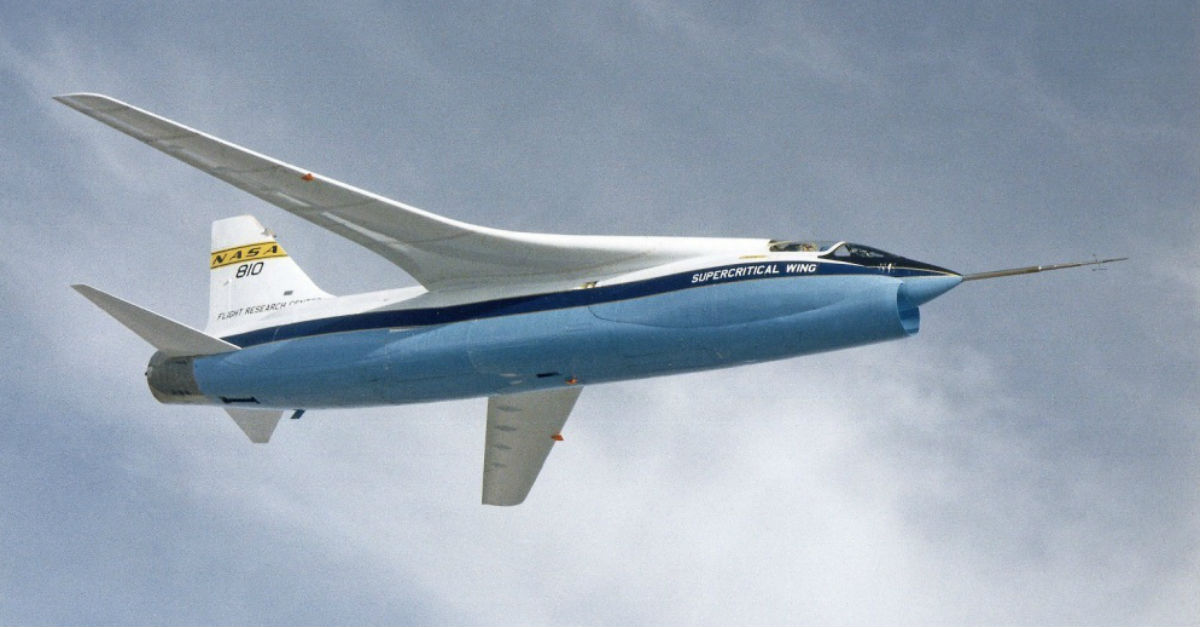
The Vought F-8 Crusader was designed to fill an interesting role—a supersonic carrier-based air superiority jet aircraft armed with guns or cannons. It was the final American fighter jet to use these as its primary armament, earning it the nickname “The Last of the Gunfighters”. Although hardpoints were later added for mounting missiles, the name is well earned.
The F-8 Crusader evolved past that role as it served from 1957 through the end of the Vietnam war. The same features that made it an ideal air-superiority fighter (namely a combat range of 450 miles and a top speed of Mach 1.86) also made it perfect for use as a photo reconnaissance aircraft. It played this role brilliantly in both the Cuban Missile Crisis and the war in Vietnam. In the jungles of Southeast Asia, it also became famous as a “bomb truck”, hitting ground targets from its base on an offshore aircraft carrier.
Cessna A-37 Dragonfly
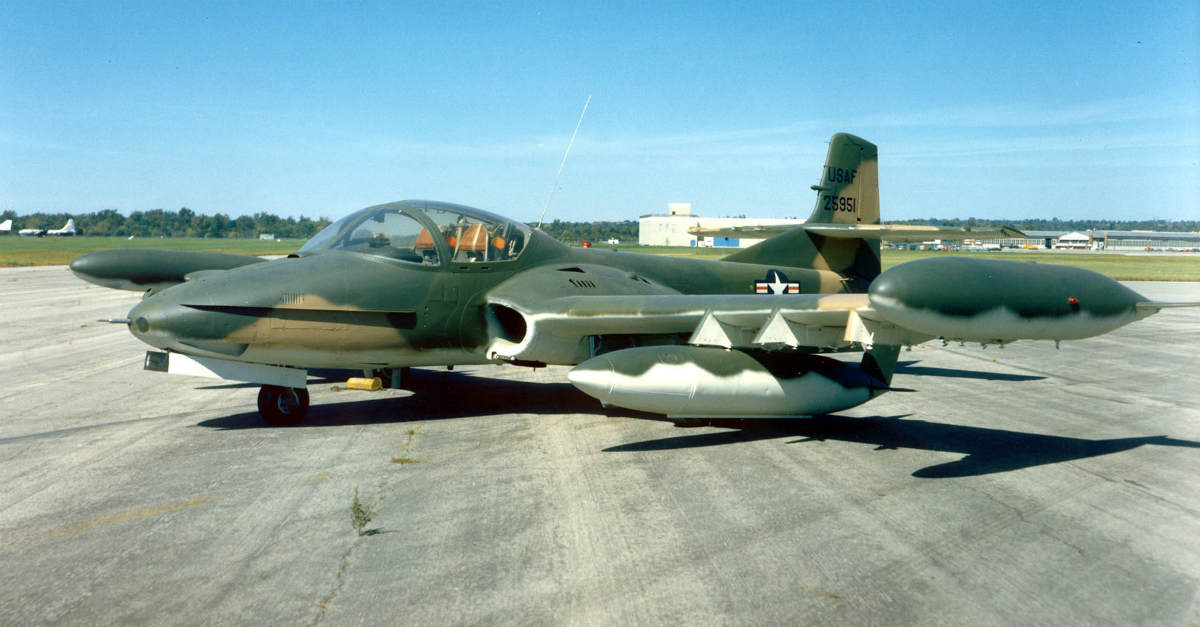
Cessna is not a name normally associated with military aircraft, but the A-37 Dragonfly filled a role that became increasingly critical over the course of the Vietnam War. The terrain of Vietnam—hills and jungle—meant that close air support was vital to American and ARVN success. Thus military minds on both sides began to explore ways to make that support faster and more accurate. One of the end results was the creation of light ground attack aircraft like the A-37 Dragonfly.
Powered by twin General Electric J85 turbojet engines, the Dragonfly could hit fast and hard with a combat radius of 460 miles. Relatively maneuverable, it proved perfect for darting in to hit difficult ground targets ahead of advancing infantry and armor. While armed with a single .308 caliber GAU-2B/A minigun mounted in the nose, its real punch came from the various gun pods, rocket pods, missiles, and bombs it carried on the eight hard points under its wings. While it slowly faded from prominence after the war ended, the A-37’s role should not be forgotten.
Shenyang J-6 (NATO Reporting Name: Farmer)
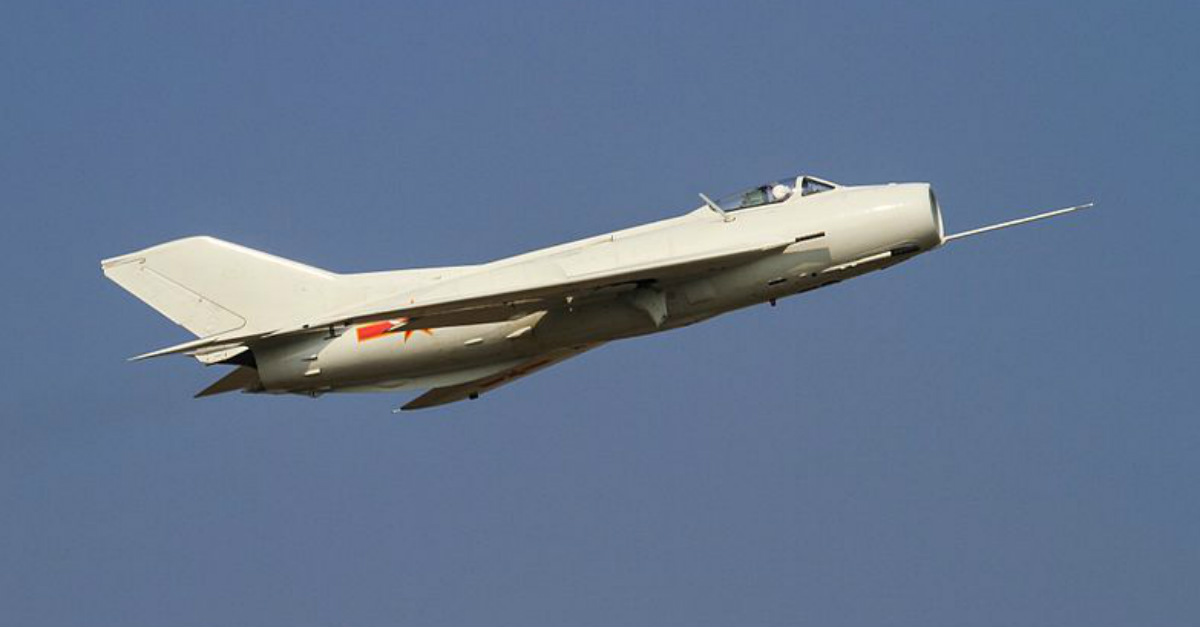
While China’s involvement in the Vietnam War is a complex mess of politics and culture, complicated further by the relationship between Hoa Chi-Minh and Mao Tse-Tung, some Chinese military aid did make it to North Vietnam to play a role in that conflict. The Shenyang J-6 was part of that. Based on the MiG-19, which the Chinese admired for its agility and turn ability, the Shenyang J-6 went into production in 1958.
The performance was not shabby: a max speed of 960 miles per hour and a service ceiling just shy of 60,000 feet. Powered by two Liming Wopen 6A turbojets—modeled again on the Tumasky R-9s used by Russia—the J-6 could keep pace with most of its contemporaries. While not capable of supersonic flight, the nimble J-6 actually outperformed the MiG-21 in dogfights due to its maneuverable design and gun-based armament. While appearing in limited numbers, their role in the North Vietnamese Air Force should not be underestimated.
Mikoyen-Gurevich MiG-17
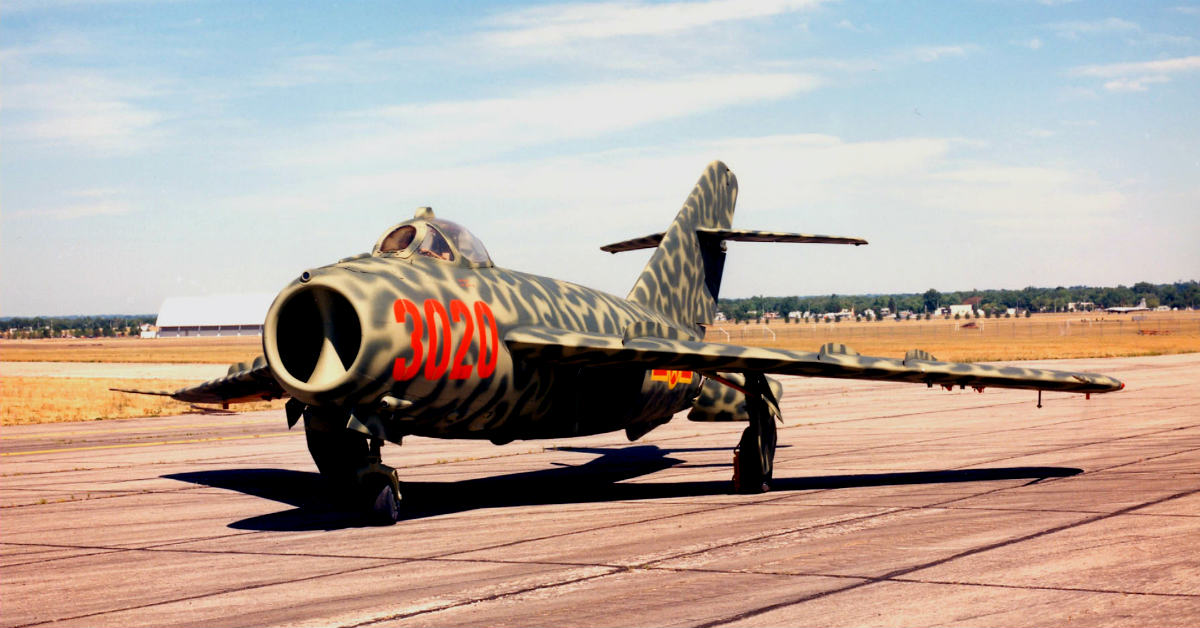
North Vietnam started the war with a number of disadvantages including the lack of sufficient air power to take the fight into enemy airspace. To meet that need, they turned to other Communist nations, chiefly the Soviet Union, for aid. Part of that aid was the Mikoyen-Gurevich MiG-17, which may have helped them hold on until better aircraft came available.
The MiG-17 project started in 1949, as the power of swept wing designs was really coming to the fore in aviation engineering. A thinner and more streamlined version of the popular MiG-15, the MiG-17 made some design adjustments for increased speed and maneuverability. The end result was an aircraft powered by a Klimov VK-1F afterburning turbojet engine with a top speed of 711 miles per hour and a range of roughly 1,200 miles. Armed with three cannons—one 37mm, two 23mm—and up to 1,100 lbs of bombs, the MiG-17 proved its worth of both air defense and ground-target engagement. While supplanted by other aircraft as the war progressed, its role in the early part of the conflict was a critical one.
Antonov An-2 (NATO Reporting Name: Colt)
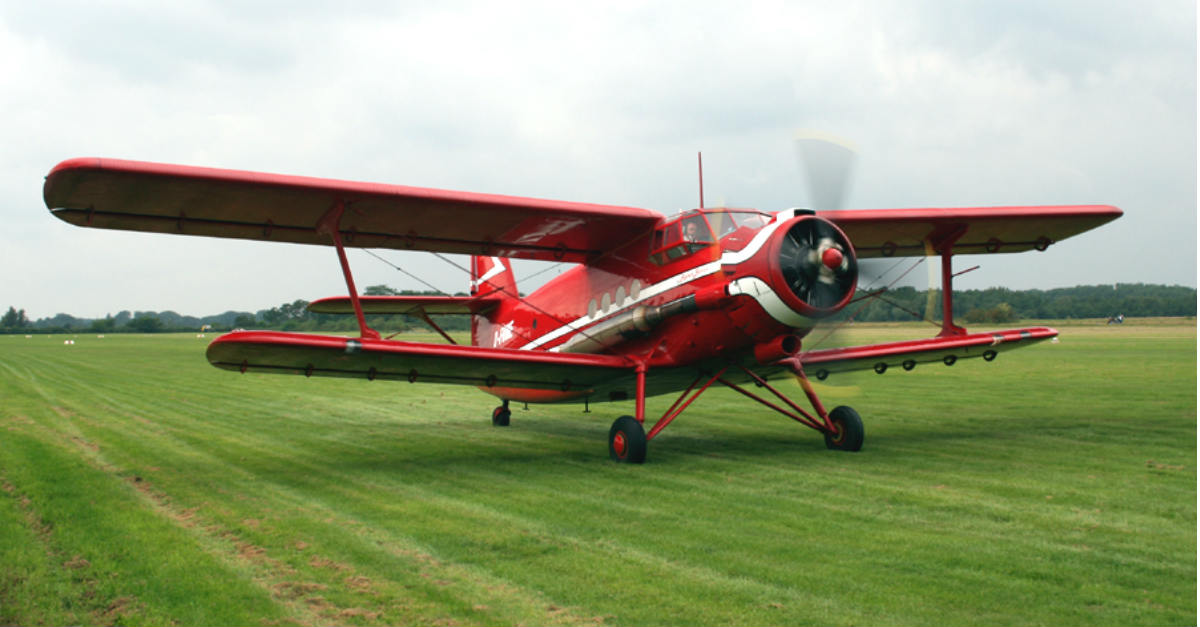
The Antonov An-2 is by far not the fastest aircraft of the war, nor is it the most heavily armed. It holds few if any records during that conflict. However, this is one of the very few biplanes that saw much action during the Vietnam war. The idea may seem insane, given the advanced nature of the other aircraft involved in Vietnam, but the Antonov An-2 offers some distinct advantages when used correctly in its role as a utility aircraft.
Able to carry up to twelve passengers in addition to its crew of two, the powerplant pushing the An-2 along was a single Shvetsov Ash-62IR 9-cylinder supercharged radial engine. This gave it a top speed of only 160 miles per hour and a range of roughly 525 miles. Not impressive numbers, however the simplicty of the engine and the robust engineering meant that the An-2 operates well in adverse conditions on remote terrain. It can make use of the short, rough runways found in the Vietnamese hinterland, is cheap and easy to maintain, and has a very low stall speed. The aircraft is perfectly maneuverable at 30 miles per hour.
De Havilland Canada Beaver
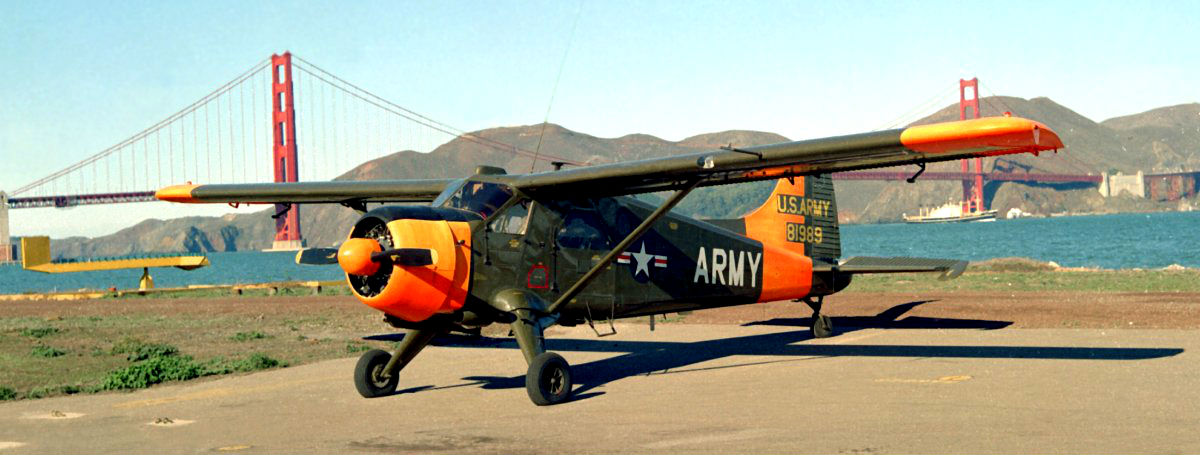
The communist forces in Vietnam weren’t the only ones to recognize the advantages of a propeller driven bush plane. US military and intelligence forces used them as well for accessing the more remote and inhospitable terrain of Southeast Asia. To fill that role, they turned to an old friend, the de Havilland Canada Beaver. First introduced in 1948, the Beaver is powered by a single Pratt & Whitney R-985 Wasp Jr. radial engine, which allows it a top speed of 158 miles per hour and a range of over 450 miles.
Combined with its rugged design and ability to take off and land on relatively short runways, this makes it nearly ideal for bush work and clandestine operations. The latter is where it came into play during the Vietnam War: the CIA’s “Air America” program made extensive use of the Beaver in supplying its assets in country, transporting personnel, occasional reconnaissance, and other espionage work. This part of the war is often overlooked, but it turned out to be vital in many of the successes the US and ARVN forces attained.
Sikorsky S-61R
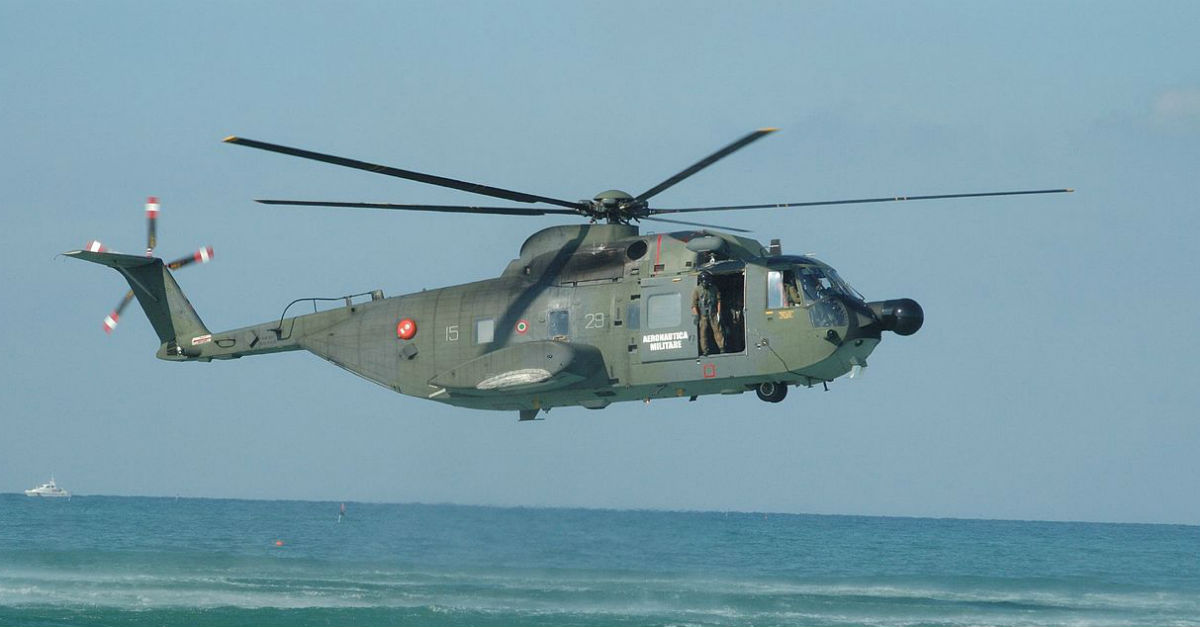
The Sikorsky S-61R is a twin engined single rotor helicopter most often used in transport or search and rescue roles. In addition to its storied combat history, the S-61R also has the distinction of being the first helicopter to make a nonstop trans-Atlantic flight. This achievement highlights one of the S-61R’s many strengths—its impressive range. In a standard configuration (not carrying extra fuel) it has a range of 779 miles. Combined with a top speed of 165 miles per hour and a service ceiling of over 20,000 feet and one can see just how versatile and adaptable the S-61R is.
A later variant of the S-61r, the HH-3E, became known as the “Jolly Green Giant” in the Vietnam War. These were frequently used to transport troops or supplies, giving the US and its allies a decided advantage in speed and deployment capability.
Bell AH-1 Cobra
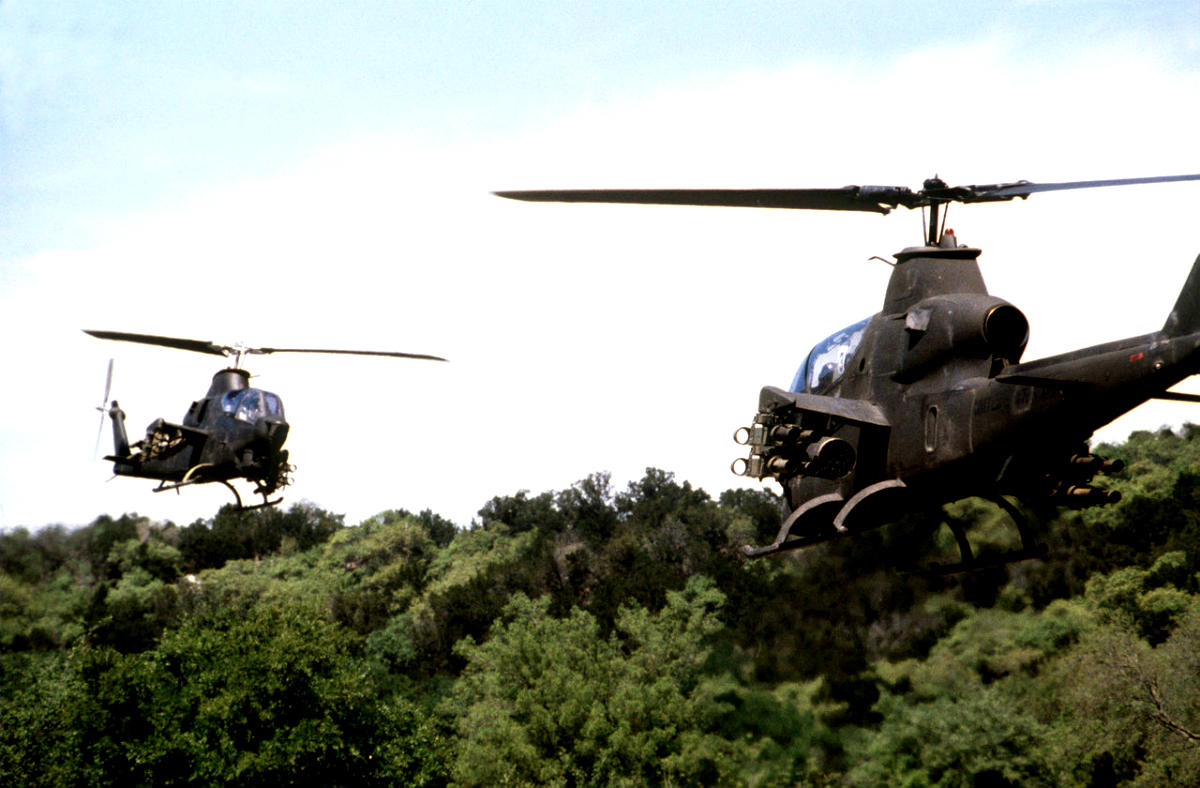
A two-bladed single-engine attack helicopter, the AH-1 Cobra ushered in a new world of warfare, in which helicopter gunships would provide close support as weapons platforms to obliterate enemy positions and vehicles. This concept proved powerful—the US military still makes extensive use of attack helicopters, and variants of the AH-1 remain in service with the United States Marine Corps.
Built around a Lycoming T53-L-13 turboshaft engine, the AH-1 was designed for a crew of two—a pilot and co-pilot/gunner. With a top speed of 171 miles per hour and a range of well over 350 miles, the AH-1 was quick to arrive where needed. The armament is perhaps the AH-1s most impressive component. This quick and nimble platform could carry two 7.62mm Miniguns, or alternately two M129 40mm grenade launchers, in its gun turret. These were supplemented by the rocket or missile pods which could be slung under the hardpoints mounted to the sides of the aircraft. Thus armed, the AH-1 Cobra could hit hard and fast, making all the difference in any battle.
Boeing CH-47 Chinook
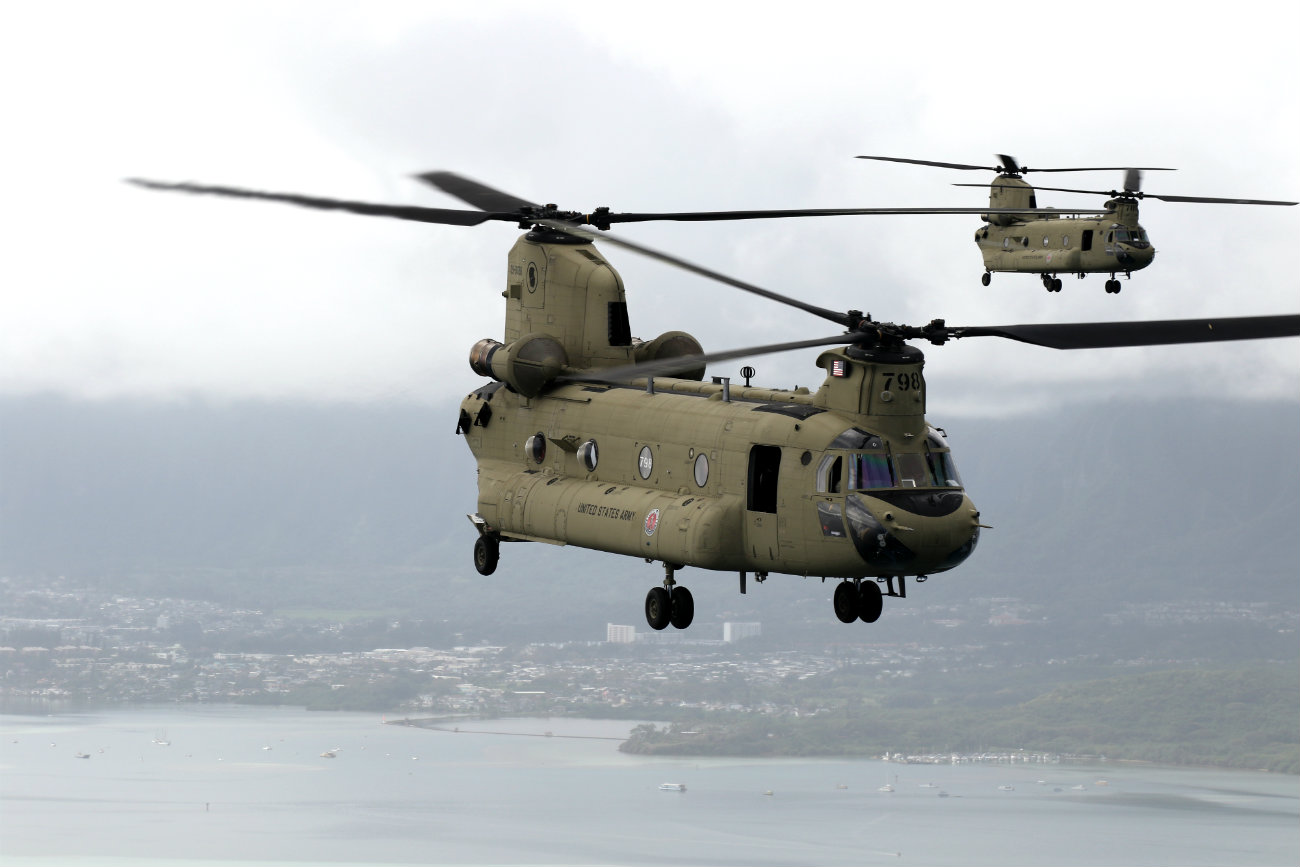
The Chinook has a distinct profile, with a tandem rotor setup that is easy to recognize even for those not particularly familiar with helicopters. And it is this unique design that allows it to perform so well in its key roles: troop movement, artillery/equipment placement, and resupply.
Operating with a crew of three, the CH-47 Chinook can carry up to 55 troops or a total takeoff weight of 50,000 lbs. This is due to its tandem rotor design, as well as its engines. Two Lycoming T55-GA0714A turboshafts provide nearly 5,000 horsepower each. With a maximum speed of up to 196 miles per hour and a combat radius of 230 miles, the CH-47’s transport capabilities were unmatched at the time. Armed with up to three 7.62 mm machine guns, it could also pack quite a punch if it came under fire. Operational from 1966 through the end of the Vietnam war, the CH-47 Chinook is a highly notable aircraft from the era.
Sikorsky CH-53 Sea Stallion
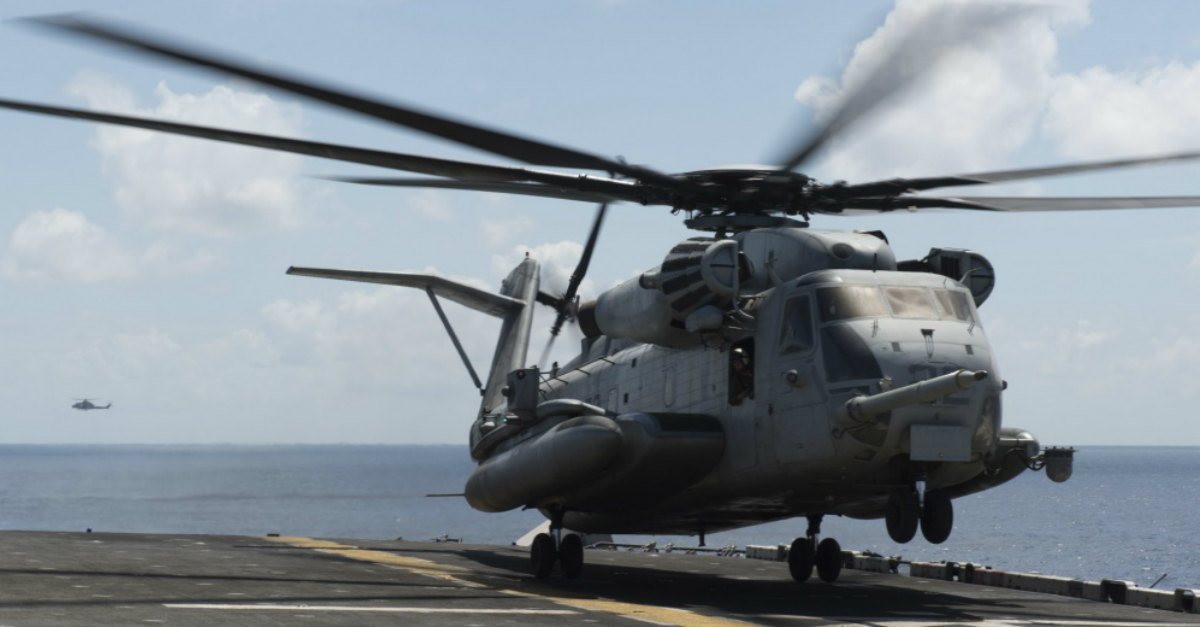
A heavy-lift cargo helicopter, the Sikorsky CH-53 Sea Stallion is another iconic military helicopter. In service with US forces from 1966 to the present, there are upgraded and updated variations still in production. The CH-53 Sea Stallion is a product of the Vietnam War, during which the United States Marine Corp saw a need for a heavy-duty transport and cargo helicopter.
In conjunction with the engineers at Sikorsky, the CH-53 was designed to meet that need. Powered by twin General Electric T64-GE-413 turboshaft engines, the CH-53 has a top speed of 196 miles per hour and a combat radius of over a hundred miles, depending on the payload and configuration. Twin door-mounted .50 caliber machine guns provided the armament in order to clear the field for the payload of up to 55 troops. Used most often in Vietnam to recover downed aircraft or evacuate troops from the battlefield, this war bird is an icon of the USMC’s part in that war.
Bell UH-1 Iroquois
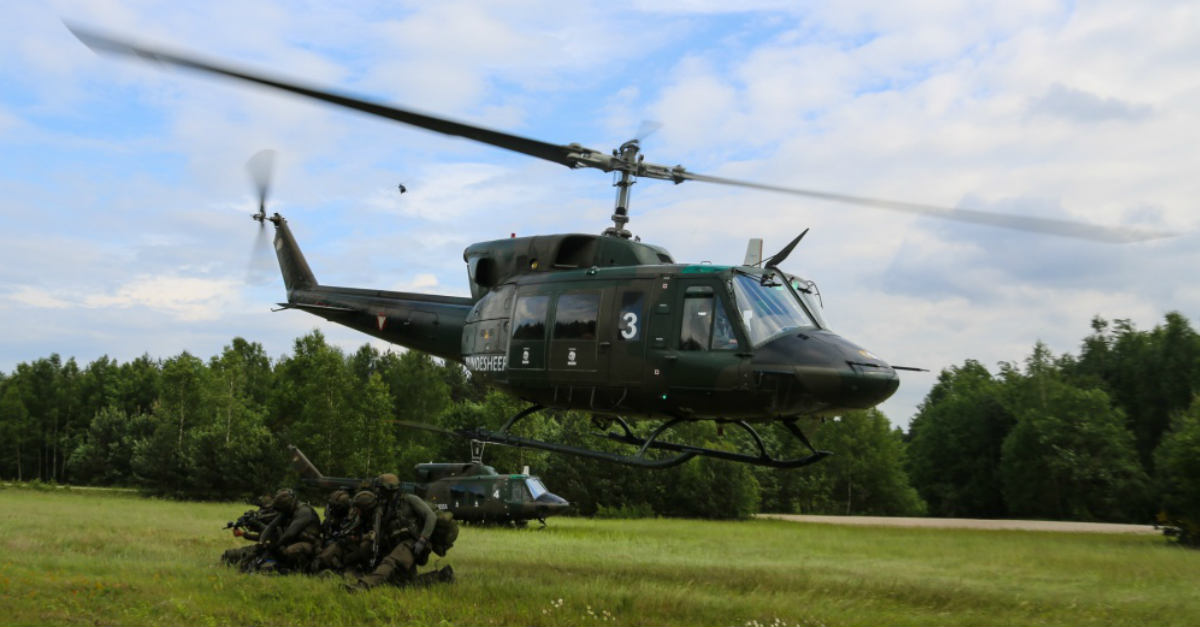
The Vietnam War is occasionally referred to as “The Helicopter War” due to the importance of rotary-wing aviation during that conflict. And perhaps no helicopter is more strongly associated with that era than the Bell UH-1 Iroquois. Nicknamed the Huey, this Vietnam War aircraft played a number of roles in the field from its introduction in 1959 and still remains in limited service to this day. Like the AH-1 Cobra, the UH-1 is built around a Lycoming T53-L-11 turboshaft engine. The UH-1 is capable of speeds up to 135 miles per hour and a range of well over 300 miles.
The “UH” stands for “utility helicopter”, but can be configured for either troop transport or as a gunship. In the latter role it supports a combination of machine guns, cannons, and rocket pods, depending on the mission. While it did operate as a gunship in Vietnam, the UH-1’s most prominent role was in medical evacuation. These helicopters would land in the thick of battle to evacuate the wounded. For many American servicemen in the field, the distinct sound of the Huey’s rotors was the most beautiful sound in the world.

